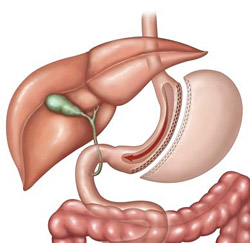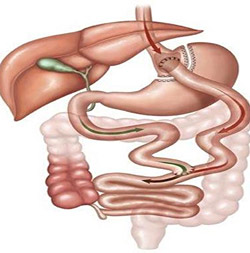Procedures
Minimally invasive surgical techniques
Our surgical procedures are performed using minimally invasive surgical techniques (also known as laparoscopic or robotic). The minimally invasive approach reduces post-surgical pain, shortens post-surgical time in the hospital, lessens overall your recovery time and sharply reduces the risk of infections. Your surgeon will talk with you about the various surgical approaches and what they feel would work best for you.
Sleeve gastrectomy

This is the most common weight loss surgery procedure, where the surgeon removes a large portion of the stomach. While this procedure reduces the amount of food the stomach can hold, it does not affect how calories and nutrients are absorbed. Patients may experience fewer side effects and nutritional complications as a result.
Roux-en-Y gastric bypass

In this procedure, the surgeon bypasses the patient’s existing stomach and digestive anatomy and creates a small stomach that connects to the small intestine through a new pathway. This restricts how much food can be eaten and changes the digestive process by limiting absorption of fats, sugars and other nutrients.
Revision surgeries
Our surgeons are able to perform revision surgery on patients who have had weight loss surgery and have experienced complications, or who are losing too much or too little weight from their initial procedure. Revision surgeries include gastric band removal, as well as conversion to a different procedure (from gastric band to gastric sleeve, for example).












